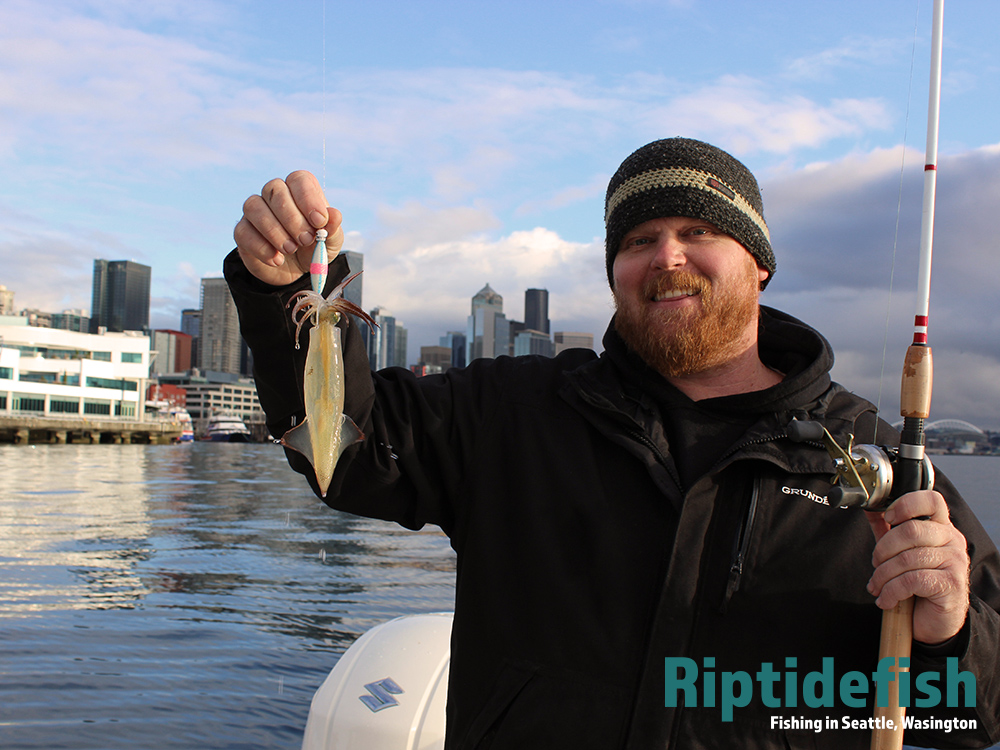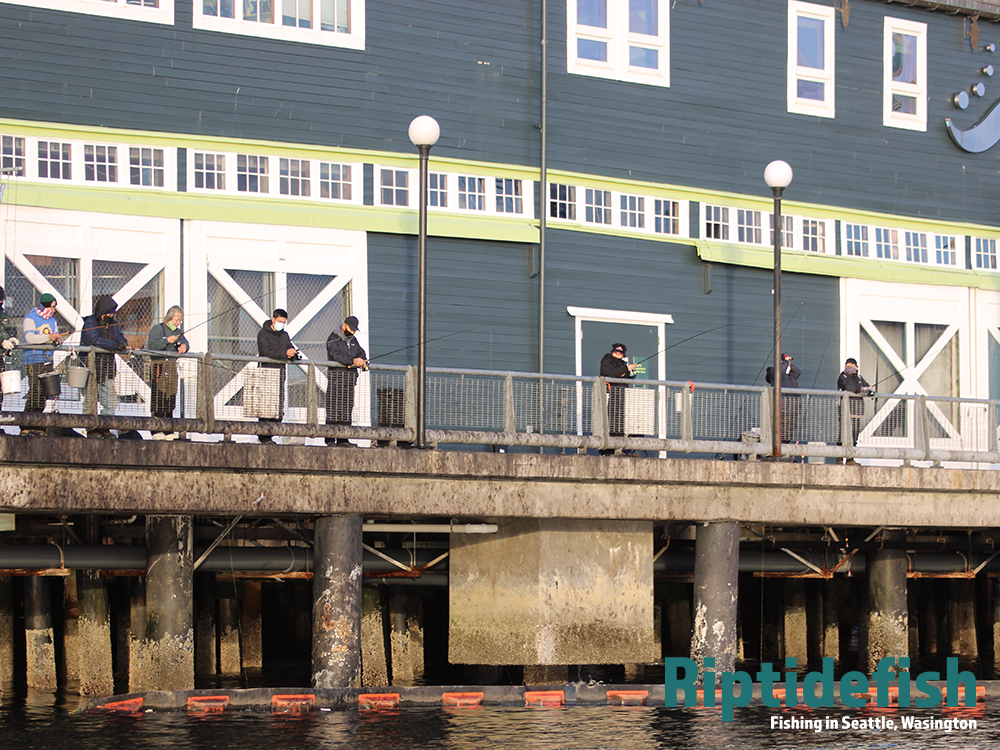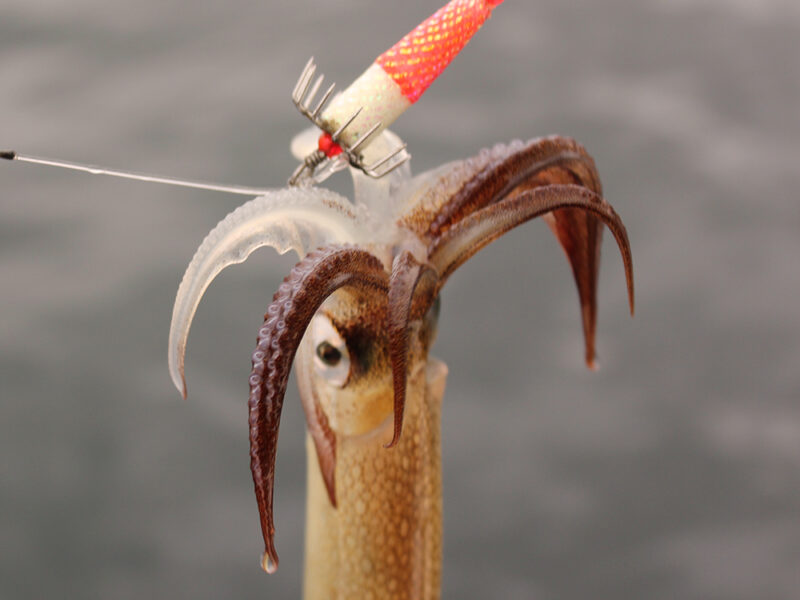Seattle’s Puget Sound is bountiful with fishing choices, and although Salmon seems to overshadow all the rest, one event that draws out legions of locals is the annual squid migrations. Depending on the time of year and what the report is, squidding around here can be a boat or pier affair, both during the day or night. All you need to do to get into the action is grab a few glow-in-the-dark squid jigs and head to the pier when the squid are in!
The common market squid is one of our local cephalopod celebrities, and once word around town spreads that “they are in”, every public pier in every waterfront community will draw a crowd. And with their migration count in the millions (maybe tens of millions), it will be easy catching.

When is the best time to go squidding in Puget Sound?
An abundance of squid moves from the Pacific Ocean into Puget Sound in early summer, with the migration peaking in Central Puget Sound in December and January. While scientists seem to not fully understand the reason for the migration, they have told us that their best guess is because they like spawning here. I’ll buy that. Seattle is a great place to raise a family after all. However, there must be at least some semblance of a resident population that lives in Puget Sound year round, because pier fishermen do seem to catch them to some degree every month of the year.
There does seem to be the occasional “hot bite” in the summer, by anglers that need a break from casting heavy metal jigs to salmon and decide to rest with a little low-effort squid jigging. There are also those that spend a couple hours at sunset specifically looking to see if a school has moved in nearby.
Puget Sound’s main squidding event occurs in the dead of winter. Some nights are windy, rainy and miserable and some nights are crisp, calm and pleasant. One thing that is certain is that the lights of the waterfront will draw in the squid and there will be someone up on those piers that is trying to catch them.
Our December sunsets occur somewhere in the 4 o’clock hour. Once darkness besets the Emerald City, it doesn’t take long for the waterfront piers to fill up with squidders. Some will put in a couple hours and head home with whatever they can get in that timeframe, some will stay as long as it takes to catch their limit. Even if that means watching the sun rise the next morning.

Squid Jigs and Gear
The Squid Jig is a lure specifically designed to catch squid and really nothing else. 20 prongs radiate from the base of the squid jig’s lead body, which could be painted with any color imaginable, but the best colors are glow-in-the dark with pink, green, red, orange, blue and green. That is, as long as it glows in the dark. Even for people trying to catch squid during the day, the glow in the dark is a non-negotiable. There are some rumors floating around that squid latch onto the jig because they are trying to eat it. Other rumors attest that squid key in on the jig because they think it is another squid and they are trying to mate with it. Either way, as they wrap their tentacles around the jig body, the sharp prongs ultimately capture the squid, and keep it attached long enough to reel it up and put it in your bucket.
Back when I started squidding, I had one squid jig, so I only fished with one at a time. Other squidders around me would tie 3 to 4 squid jigs inline, separated by maybe 12″ to 18″, and would reel up 3 to 4 squid at a time. I learned quickly that this is a great advantage, especially if you don’t want to spend all night on the pier.
Doing it for the Calamari
Catching Squid is a true Seattle experience, and pretty darned fun. For me, I’m in it for the food as well. A successful squidding trip means we will have more than our work cut out for us in the kitchen. Squid need to be cleaned and portioned, breaded and fried, and the excess frozen for later meals.
My absolute favorite dish to prepare is Salt and Pepper Calamari, and the freshness of using our daily catch in this recipe makes it one you will remember.











 Lingcod Fishing in Puget Sound, Washington
Lingcod Fishing in Puget Sound, Washington
